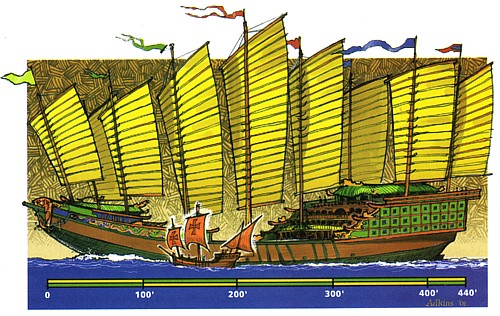ohcrapitsnico
Deity
- Joined
- Jan 16, 2006
- Messages
- 2,267
Alright, let's compare the size of the "Treasure Ships" and 15th century Portuguese caravels.
So Chinese junks were larger, more sophisticated and more seaworthy than any European ships. Given the Chinese navigational knowhow, a voyage to the Americas is a possibility, but not a certainty.
Anyway, I think we're forgetting Zheng He's real significance. His voyages pretty much secured Chinese dominance of the Indian Ocean trade route east of India, even after the arrival of the Spanish and Portuguese. His voyages were also a factor in the large scale Chinese immigration to South East Asia from the 14th century onwards.
True. Regardless much of his actions were undone by growing isolationism and conservatism which had Asia and the Middle east in its death grip.Are you sure the Chinese dominated trade in the seas east of India, I may be wrong?




